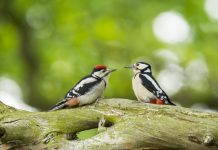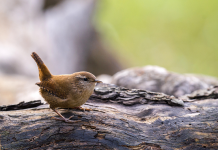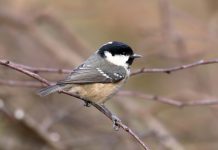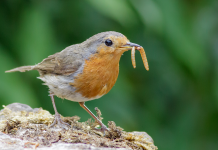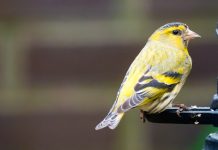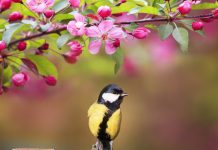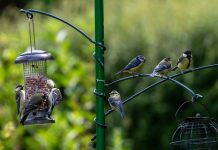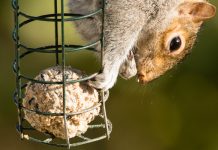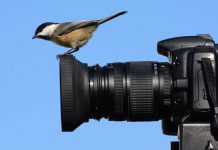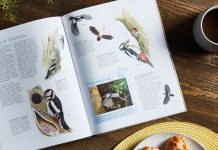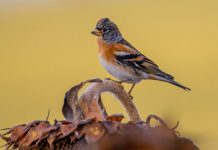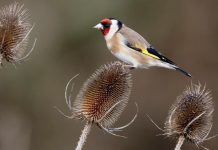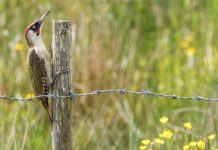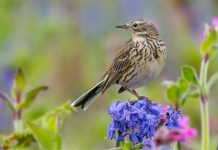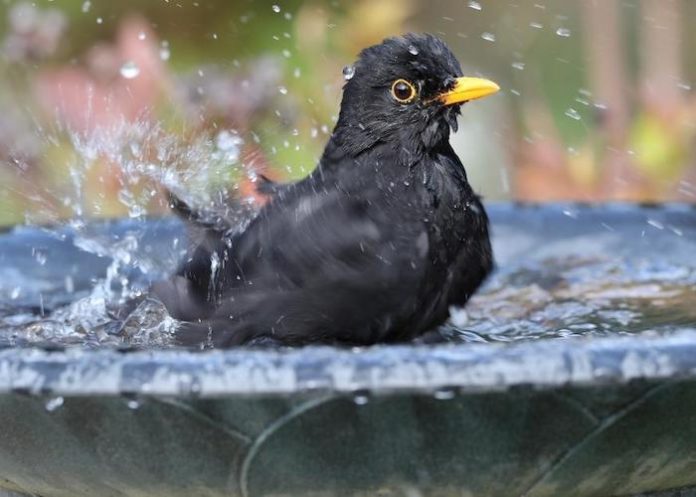A water bath is an essential addition to any birdy buffet. Ensuring your feathered friends have access to a clean, reliable water source is every bit as important as providing feed. After all, what’s a refreshments table without any drinks? Read on to discover everything you need to know about bird baths, and how to make yours the best watering hole in town.
Why should you install a bird bath?
Birds need a clean, reliable water source all year round for drinking and cleaning their plumage. This becomes even more important during the spring and summer months, when periods of warmth and drought may lead to other sources drying up. On top of this, parent birds need to consume a lot of water during the busy nesting season – nest building and raising a brood is thirsty work! Bird baths are also invaluable during particularly cold snaps in winter, when other water sources may be frozen.
Most small birds need to take in water at least twice each day. Those with seed-heavy diets need to drink the most as they get little water from their food – so it’s all the more important to provide a drinks tray alongside your buffet! Regular bathing is also important for birds to keep their feathers in tip-top condition, as it removes dust and dirt and helps with preening. During preening, birds dampen and rearrange their feathers to improve insulation, and spread preening oil to make them waterproof.
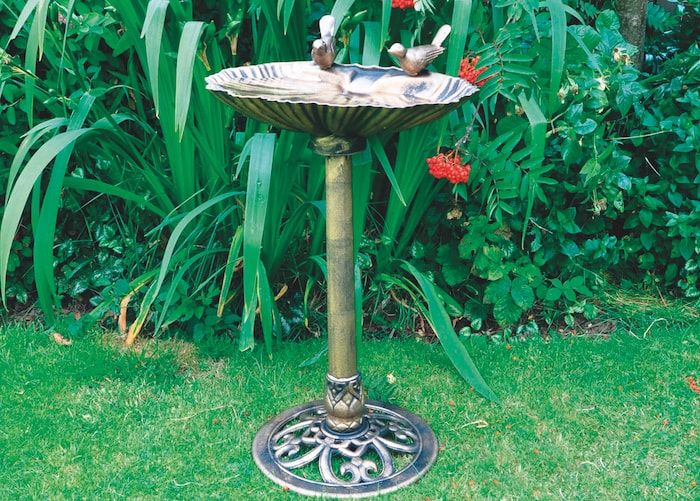
Image: Kingfisher Bronze Effect Plastic Bird Bath from Happy Beaks
By installing a bird bath, you may also attract visitors you don’t usually see around your feeders, such as collared doves, blackbirds and thrushes. You’ll also get to enjoy watching your feathered friends splashing about and enjoying a great bath – so it’s a win-win! A bird bath can also make a stylish and attractive garden feature in its own right, with pedestal bird baths providing a focal point.
Choosing a bird bath
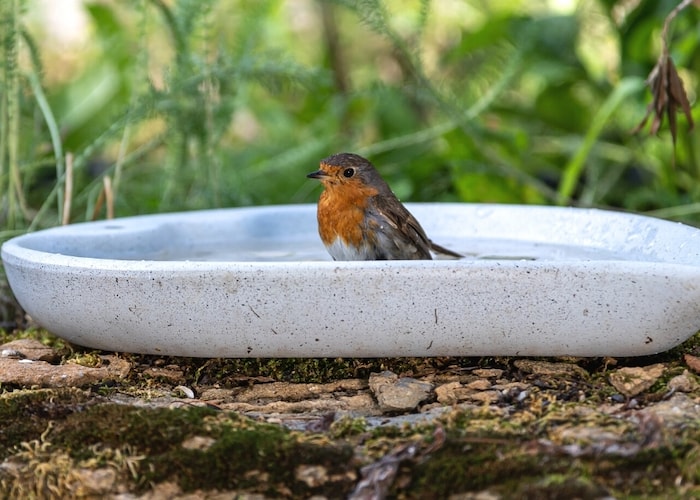
Image: Canva
A bird bath should be deep enough for birds to wade into, but not too deep for them to be put off by it. The ideal bird bath is around two inches deep at the deepest point, with gently sloping sides that provide shallower areas for smaller birds. Having very shallow areas also allows beneficial insects such as bees to drink from the water, and helps them to climb out if they fall in. When in doubt, shallow water is the better option, as birds won’t bathe in deep water.
Bird baths made from a smooth material such as weatherproof resin or glazed ceramic are best, as they are easy to clean and are less prone to cracking in cold weather than concrete. To make the bath less slippery, consider adding some gravel to the bottom. This will help the birds feel safe and facilitate a rapid exit should any predators appear.
If you don’t have space for a separate bird bath, our multi-hook feeding stations include a small water dish from which birds can drink.
Where should you put your bird bath?
You’ll love watching the first visitors arrive at your new bird bath, so make sure to put it somewhere you can see it – and where it’s easy for birds to spot. It can work well to put the bird bath near a feeding station; just make sure you don’t place it directly underneath any feeders, as this will cause any falling food debris and droppings to collect in the water.
If possible, a shady position is best as this will keep the water cooler and slow its evaporation. Somewhere with a tree or shrub nearby is ideal, as this helps the birds feel safe by providing cover they can escape to if needed, and gives them somewhere to sit to preen their feathers and dry off. Try not to put it directly under a tree or shrub though, as leaves may accumulate and decompose in the water.
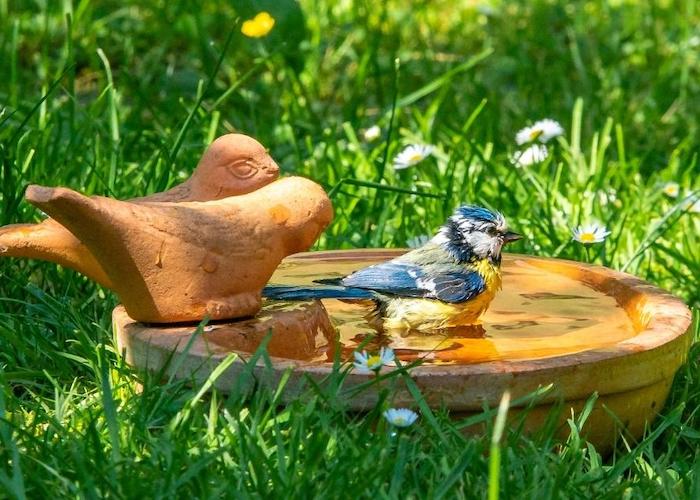
Image: Canva
If you’ve got a ground-level bird bath, make sure to position it out in the open, away from dense planting. This prevents predators such as cats from being able to sneak up on birds while they bathe. Flat, stable ground will help to keep the bath full with an equal water level throughout.
In summary, the best place to put a bird bath is:
- Somewhere easily visible
- Not directly underneath feeders
- Near (but not under) a shrub or small tree
- In the shade
- On flat, stable ground
- Not surrounded by dense vegetation where predators can hide.
Maintaining your bird bath
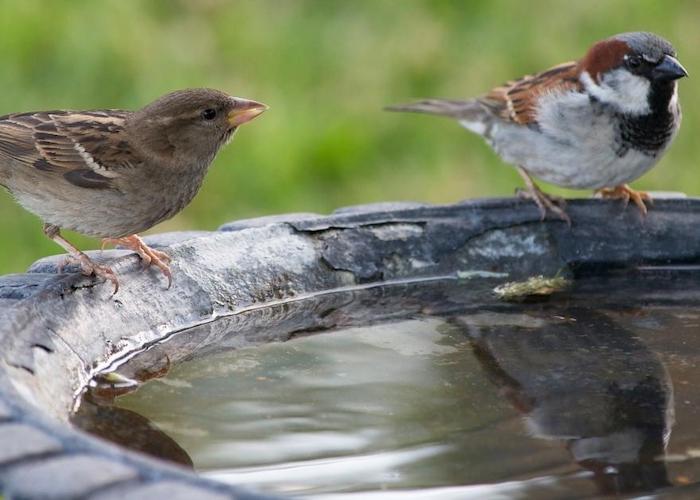
Image: Canva
The most important things to remember about caring for your bird bath are to keep it topped up, to change the water frequently and to clean it regularly.
Bird bath hygiene is critical to keeping your feathered friends happy and healthy. Dirty bird baths can become reservoirs of disease. Regular cleaning is therefore important to prevent build-up of droppings and algae – a bristle brush and our specially formulated cleaner with sanitiser are perfect for the job.
Try to change the water in your bird bath every day or two, depending on how many visitors you have and how warm it is. Make sure it never runs dry, especially in hot weather, as your local birds may have come to rely on it for their water supply.
How to prevent bird baths freezing in winter
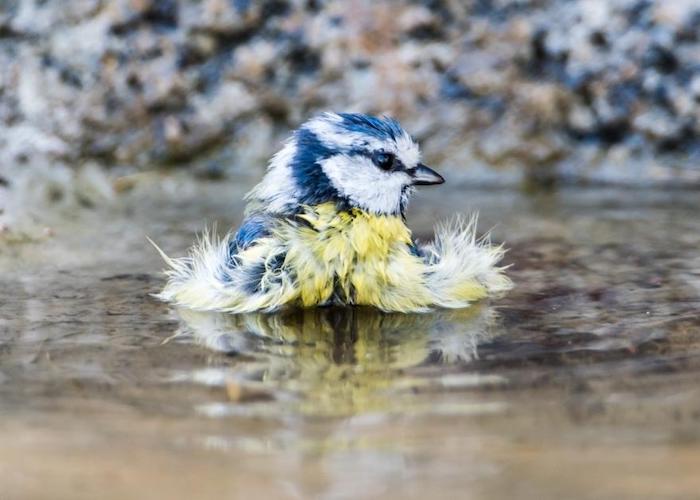
Image: Canva
Never add chemicals such as antifreeze or glycerine to your bird bath to prevent it freezing over in winter. Antifreeze is toxic to birds and glycerine damages feather waterproofing, making birds susceptible to hypothermia. There are a few safe ways you can keep an ice-free water supply in cold weather:
- Add a lightweight ball to the water. The ball should float and move around the bath with any breeze, keeping a small area free of ice.
- Temporarily offer water in the mornings from a plastic bowl instead, bringing it back inside when ice starts to form.
- If the water is already frozen, break and remove any surface ice if you can and add hot water to slow re-freezing. If it is frozen solid, simply pour hot water onto the ice to melt a small section.
How to make your bird bath even better
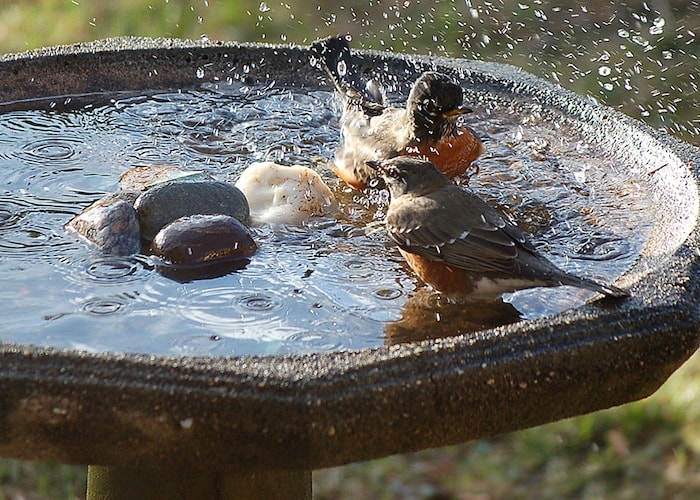
Image: RobinAmaral via Getty Images.
We’ve already mentioned adding some gravel to the bottom of your bird bath to create shallower edges and make it less slippery. But you can also consider adding some larger stones to the middle of your bath so that they protrude a little above the surface. This gives birds a place to stand to drink water without getting wet, which is especially helpful during the colder months. It will also be a welcome addition for insects such as bees, allowing them to sip at the water without the risk of falling in.
Birds find moving water irresistible, and are often seen drinking from fountains. Creating a dripping or rippling effect in your bird bath will catch the sunlight and the attention of any birds flying past. For a truly luxurious bathing experience, you can add a small solar-powered floating fountain to the surface of a larger bird bath. You can also rig an old bucket full of water above, with a small hole in the bottom to allow water to drip through and create ripples. Your feathered friends will feel like they’re at the spa!
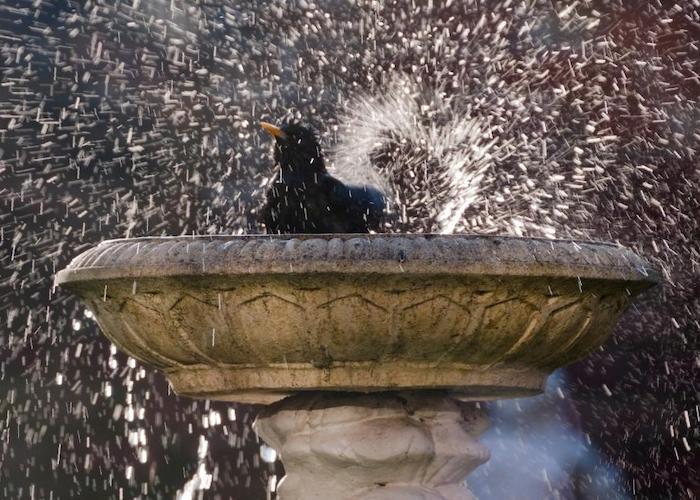
Image: Canva
Have you got a bird bath in your garden? What birds have you seen paying it a visit? Let us know over on our Facebook page!
Lead image: Canva

